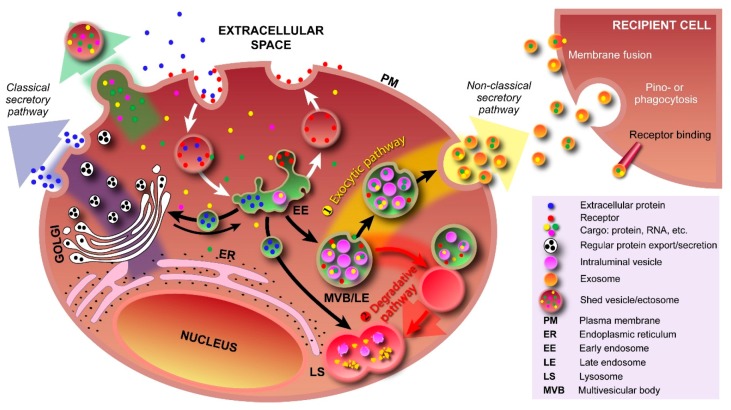Figure 2.
Pathways involving various types of vesicles. In the classical secretory pathway, vesicles with protein cargo, sorted and packed in the Golgi apparatus, transport their cargo to the plasma membrane (PM). By fusing with the PM, both membrane proteins and secretory proteins are effectively transported to their intended destinations. Various types of cargo, e.g., proteins, RNA, can also be transported into the extracellular space via outward PM budding and formation of shedded vesicles (ectosomes). Cargo is taken up by the cell via endocytosis (receptor-mediated and free uptake) and formation of early endosomes. In early endosomes, proteins are either recycled to the PM or sequestered into the intraluminal vesicles (ILV) of MVBs. Formation of exosomes starts with inward budding of the early endosome’s membrane and subsequent formation of MVBs. In the exocytic pathway ①, MVBs fuse with the PM to release their contents (exosomes) into the extracellular space; In the degradative pathway ②, the MVBs are trafficked to lysosomes for enzyme-assisted degradation. This pathway is particularly important for restricting signaling by activated growth factor receptors. Exosomal cargo delivery to the recipient cell can occur through various mechanisms, i.e., direct fusion with the recipient cell’s membrane, pinocytosis/phagocytosis, or ligand–receptor binding.

